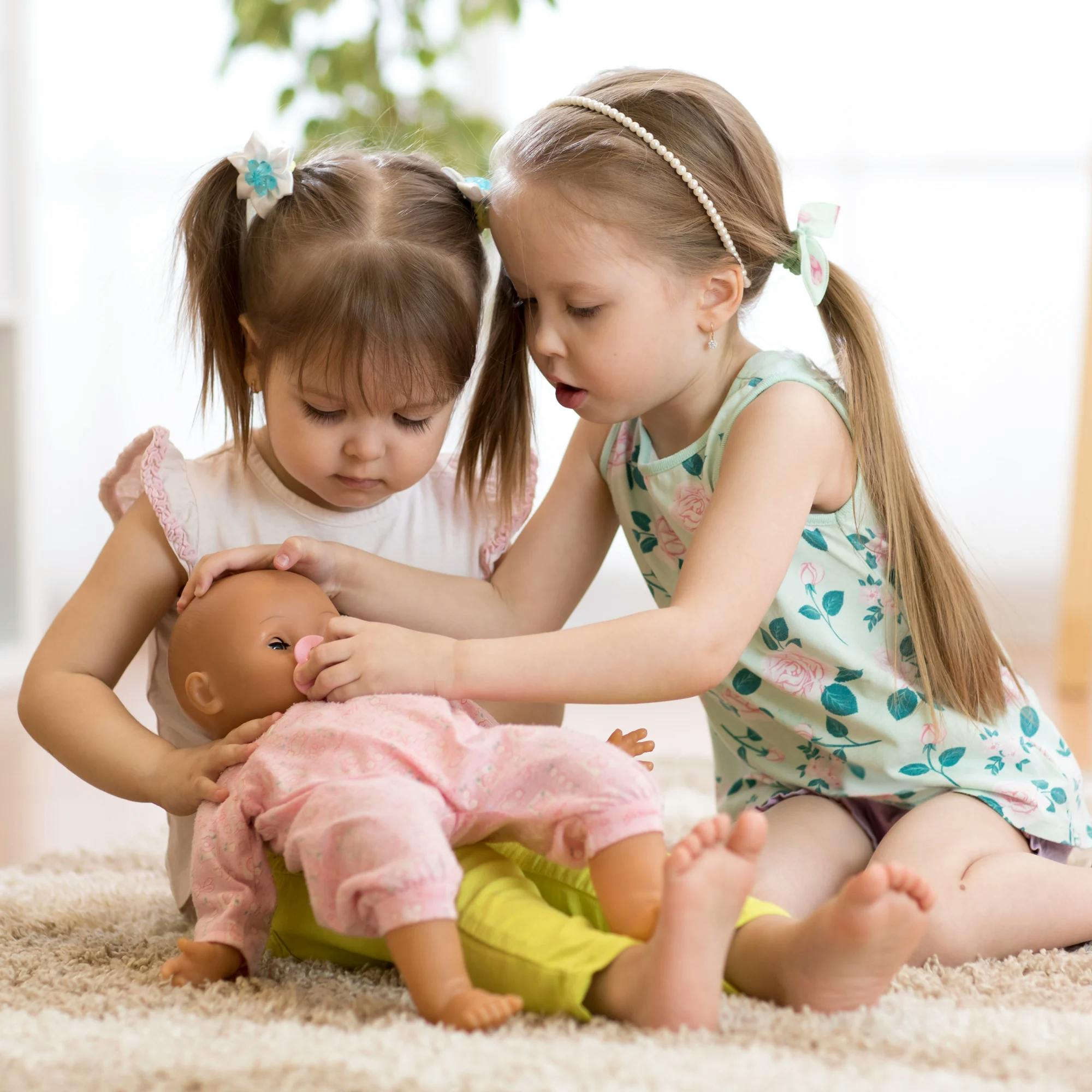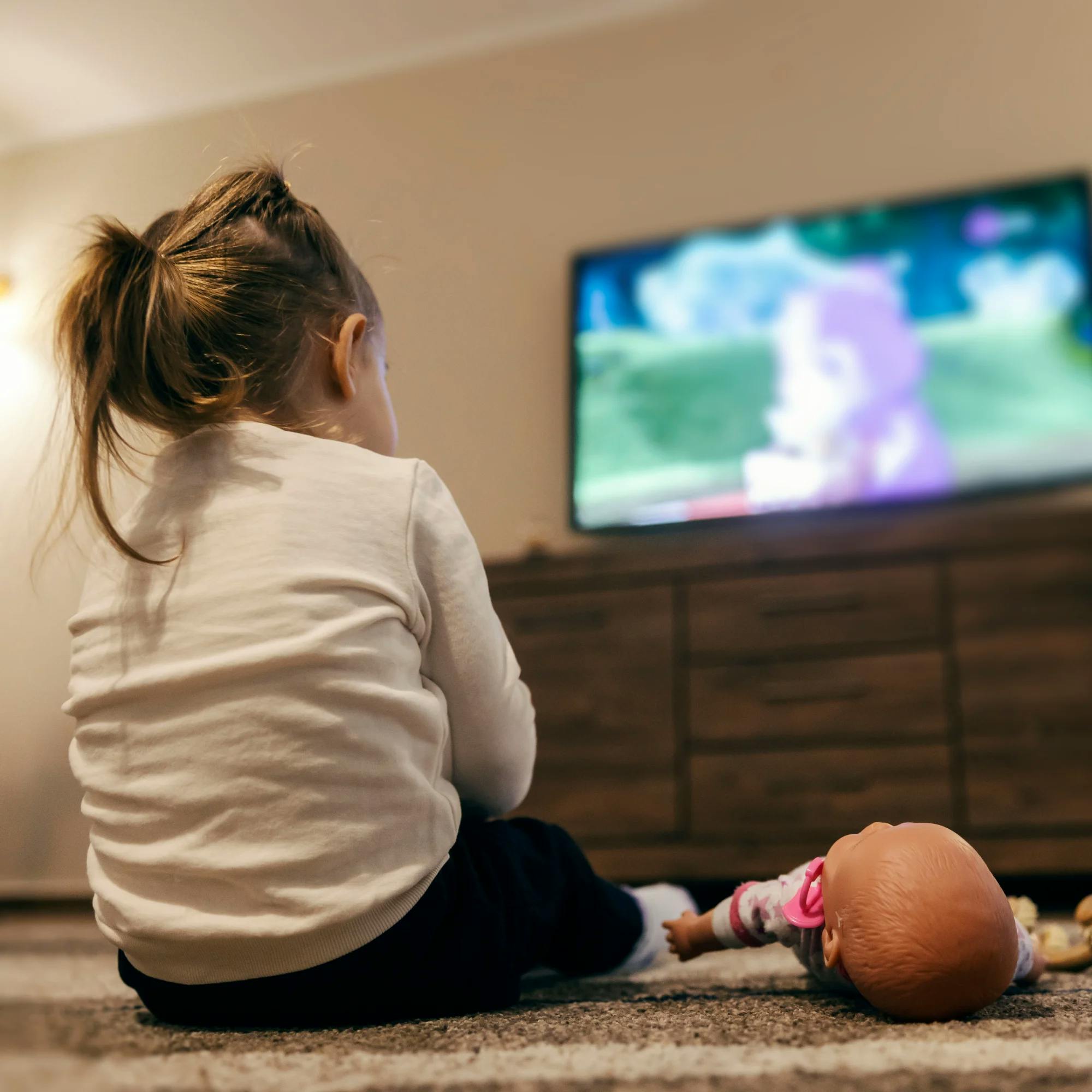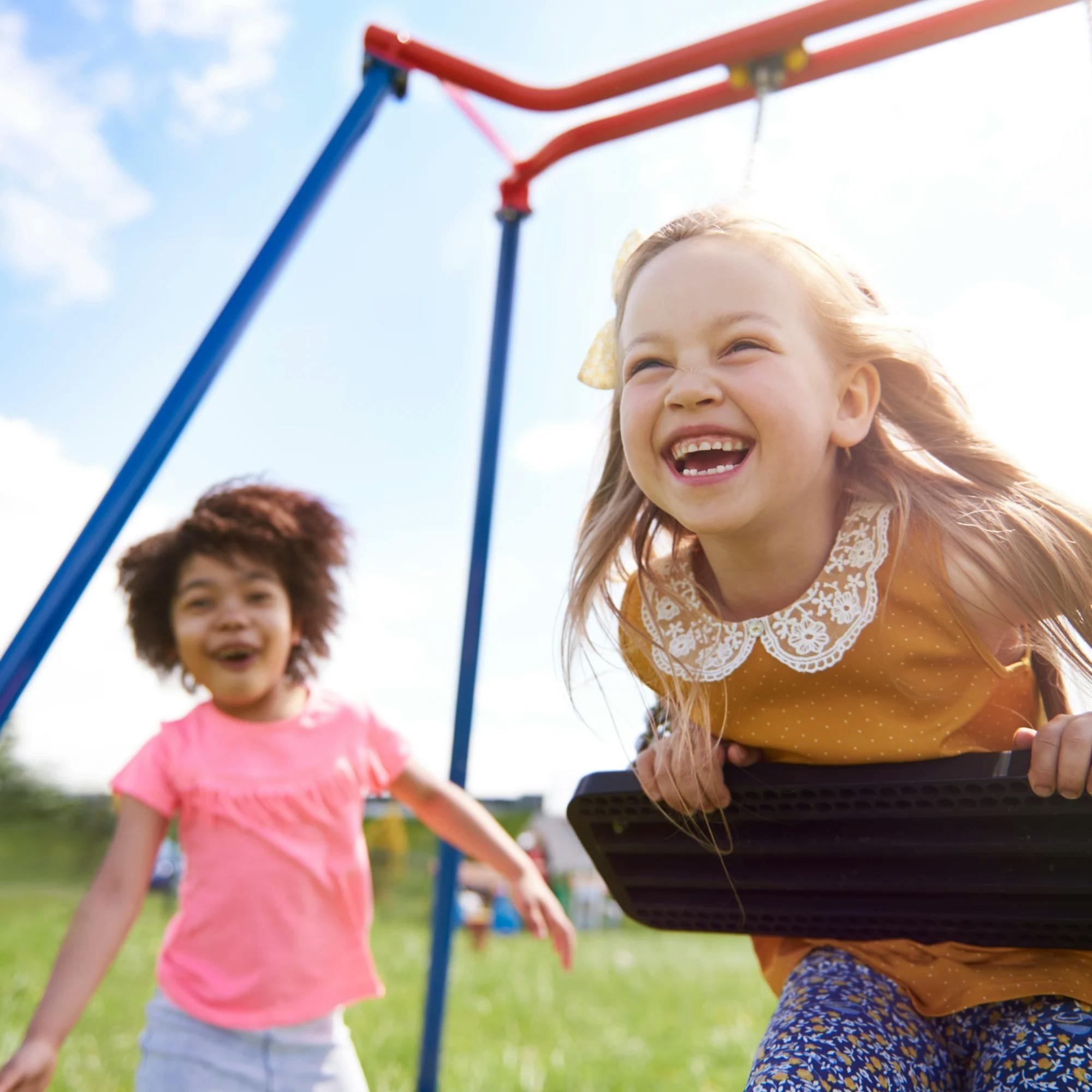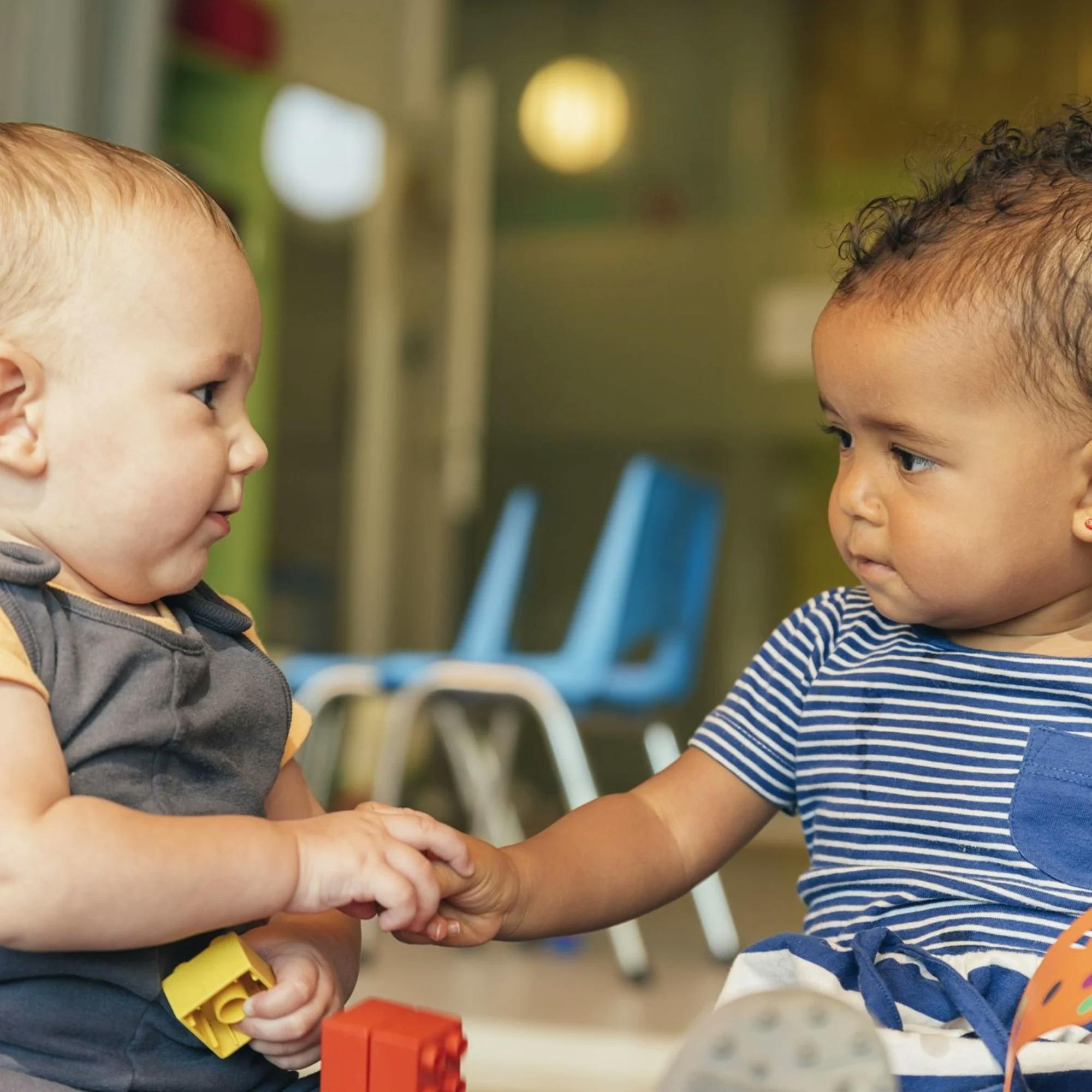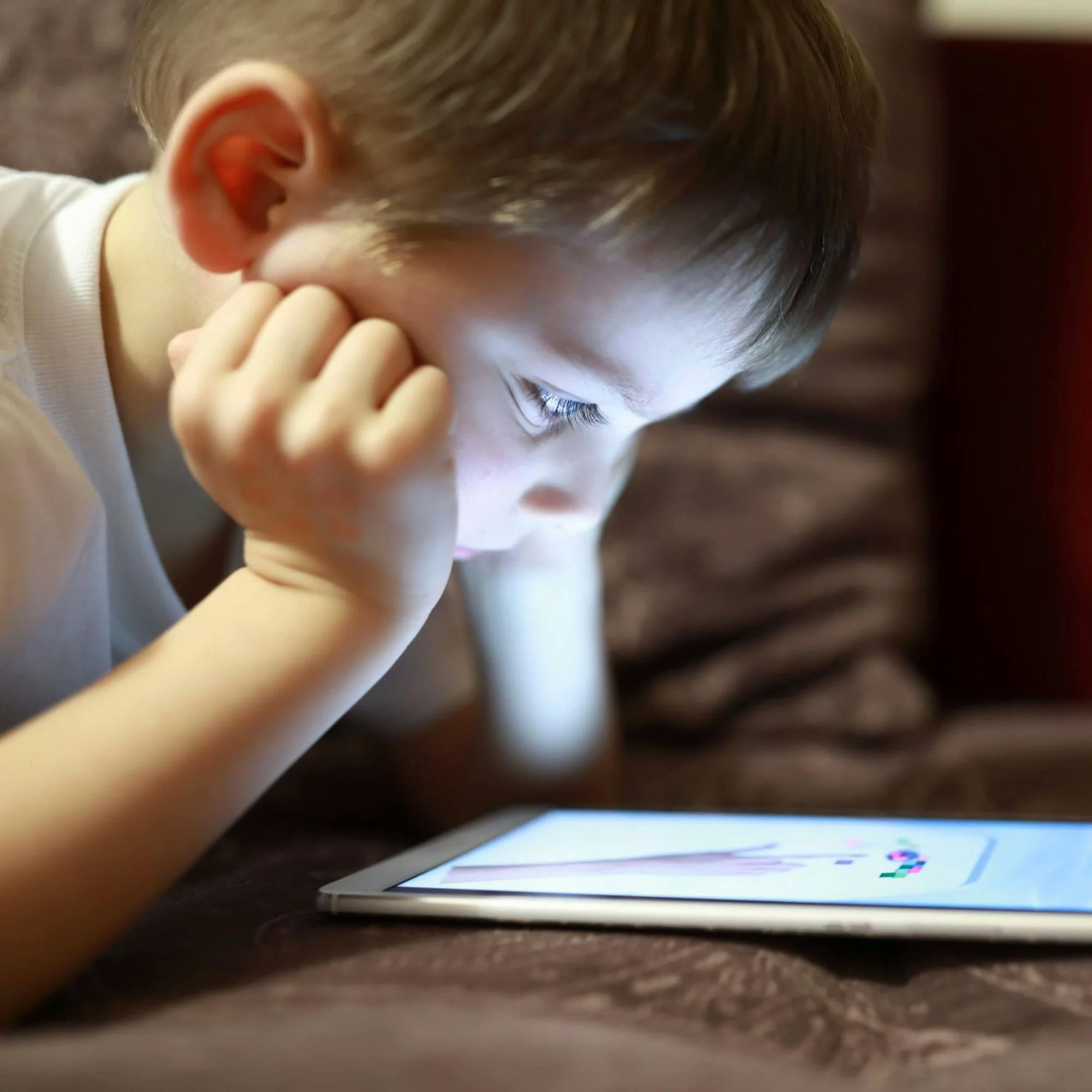From baby dolls to Barbies to action figures, dolls are one type of toy that most children are likely to encounter while growing up. Now, new research has shown that playing with dolls may help activate the social processing regions of children’s brains. This is important for a child’s developing social skills–how they understand and interact with other people.
Let’s break down the research, find out why the results matter, and discuss how you can use play to support your child’s communication growth.
How was the study completed?
The researchers set out to assess the relationship between children’s play routines and their brain activity and communication development.
The study included 57 children between the ages of 4 and 8 from the Neurodevelopment Assessment Unit at Cardiff University. Some children were noted to have emotional, cognitive, or behavioral difficulties. Other children did not have any kind of neurodevelopmental diagnosis or developmental delay.
The study assessed children while they played in two scenarios: by themselves and with a partner. The items used during play included the following:
Barbie dolls and accessories, including a mix of genders and races
Two games on iPads: a hairdressing game in which children choose characters and wash, cut, and style their hair, and a world-building game in which children build cities including roads, buildings, and lakes
These tablet games were chosen because, similar to doll play, they include characters and don’t have strict rules or objectives.
While the children played, an imaging technique called functional near-infrared spectroscopy (fNIRS) was used to assess the amount of activity in a part of the brain called the posterior superior temporal sulcus (pSTS). The pSTS is associated with social processing. It’s the area of the brain that helps people understand how others may be thinking or feeling. This is a key skill in social communication development.


What is social communication?
Social communication, also called social pragmatics, refers to the “social rules” we follow that make it easier to communicate with each other. Some examples of social skills include:
Using specific language for different reasons, such as greetings and requests
Taking turns with another person
Staying on topic during a conversation
Changing language for the situation–for example, talking differently to a teacher than to a friend
Being mindful of personal space
Identifying emotions within yourself and others
Understanding humor and sarcasm

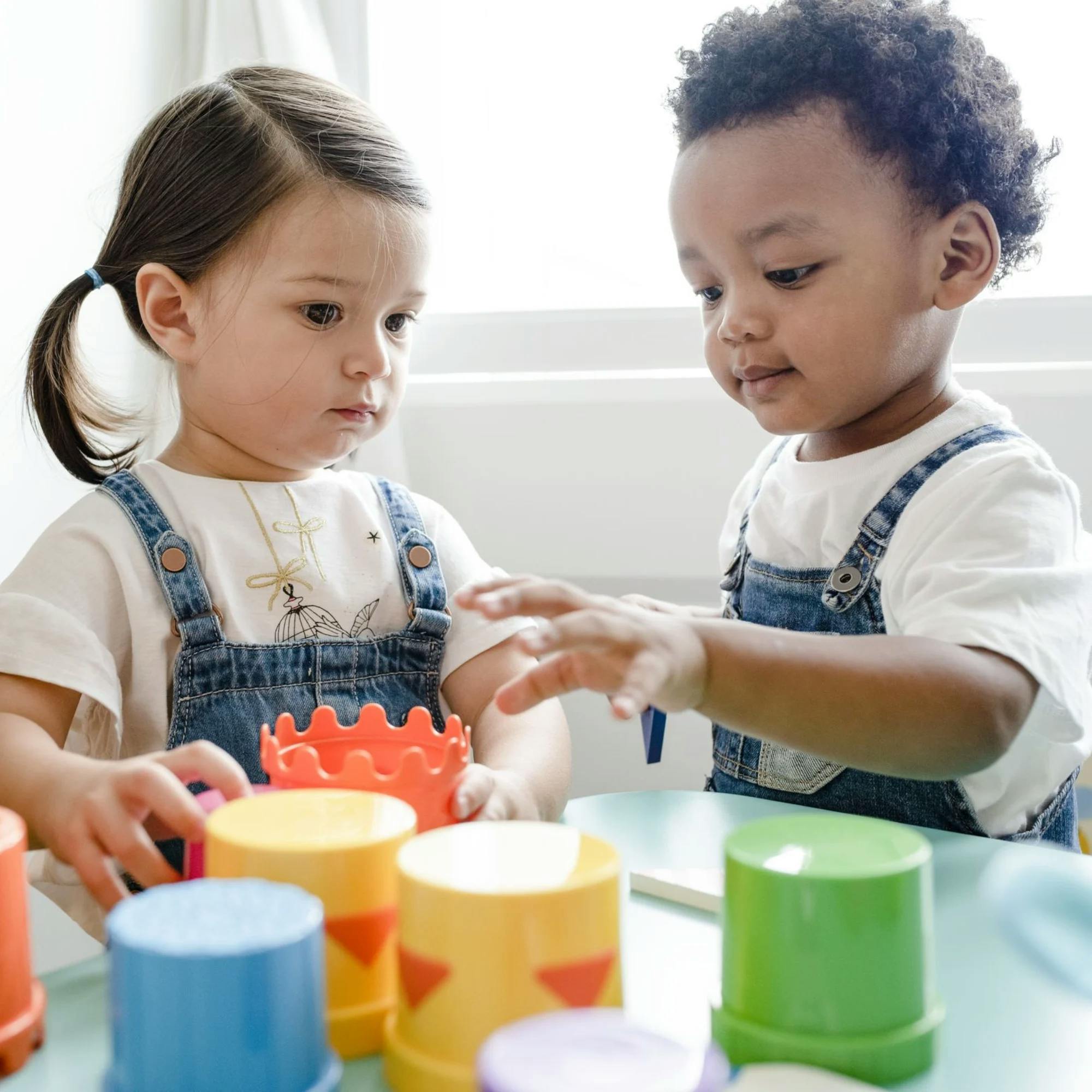
What were the study findings?
When the children played with dolls or a tablet with another child, their brain showed more activity in the pSTS than when they played with these items alone.
Not surprisingly, children also talked more when playing with a partner, compared to when they played by themselves. It stands to reason that playing with someone else gives children more chances to practice language.
One important note: The amount of verbal exchanges and types of play differed among children with varying degrees of autistic traits.
In children with more autistic traits...doll play appeared to encourage social interaction, even during solo play.
Children who demonstrated fewer autistic traits used more language related to the thoughts and feelings of others while playing. They used this language most while playing with the doll, as opposed to the iPad. This type of language is called internal state language (ISL), and it highlights the role of pretend play in enhancing a child’s social skills.
However, the study also found that in children with more autistic traits, “pSTS activity was linked to interactions with the [researcher] during solo play. Doll play appeared to encourage social interaction, even during solo play.”


Why do these study results matter?
This study shows the importance of play for all children’s communication and social processing development.
The findings suggest that all children may use doll play as a tool for practicing social scenarios and developing social skills.
The research leader, Dr. Sarah Gerson of Cardiff University’s School of Psychology’s Centre for Human Developmental Science, explained it this way:
“Our study shows that doll play can encourage social processing in children, regardless of their neurodevelopmental profile. The findings suggest that all children, even those who display neurodivergent traits commonly associated with autism, may use doll play as a tool for practicing social scenarios and developing social skills, such as empathy.”
How play helps a child’s overall communication development
Play is an important way for children to develop their social skills. But play also contributes to children’s speech and language growth.
At a very simple level, did you know that playing mimics communicating? Playing with others involves a back-and-forth exchange, just like a conversation. Rolling a ball or a toy car back and forth requires two people to complete the task. Pretend playing with dolls and making them interact also requires two people. Whenever two or more people are needed in a play routine, a communication exchange is likely to happen.
Play also helps children learn about cause-and-effect relationships. Here are two examples:
Blocks can stack, but if you push them over they will fall.
If you push a toy train, it will drive on the track where you want it to go.
Cause-and-effect comprehension is another important way that children develop early communication skills. When a child begins to use new words to communicate, it’s essentially a cause-and-effect relationship. The child says something, then gets a response.
Here’s an example. In a pretend play routine, let’s say two kids were playing doctor. Learning and understanding cause-and-effect in this play routine might look like this:
One child says, “I hurt my leg!” The kiddo playing the doctor then knows to respond in an appropriate way. They might say, “We need to do surgery!” or “Let’s get you a bandage.” This understanding of cause-and-effect helps carry on the play routine, creating a pretend storyline.

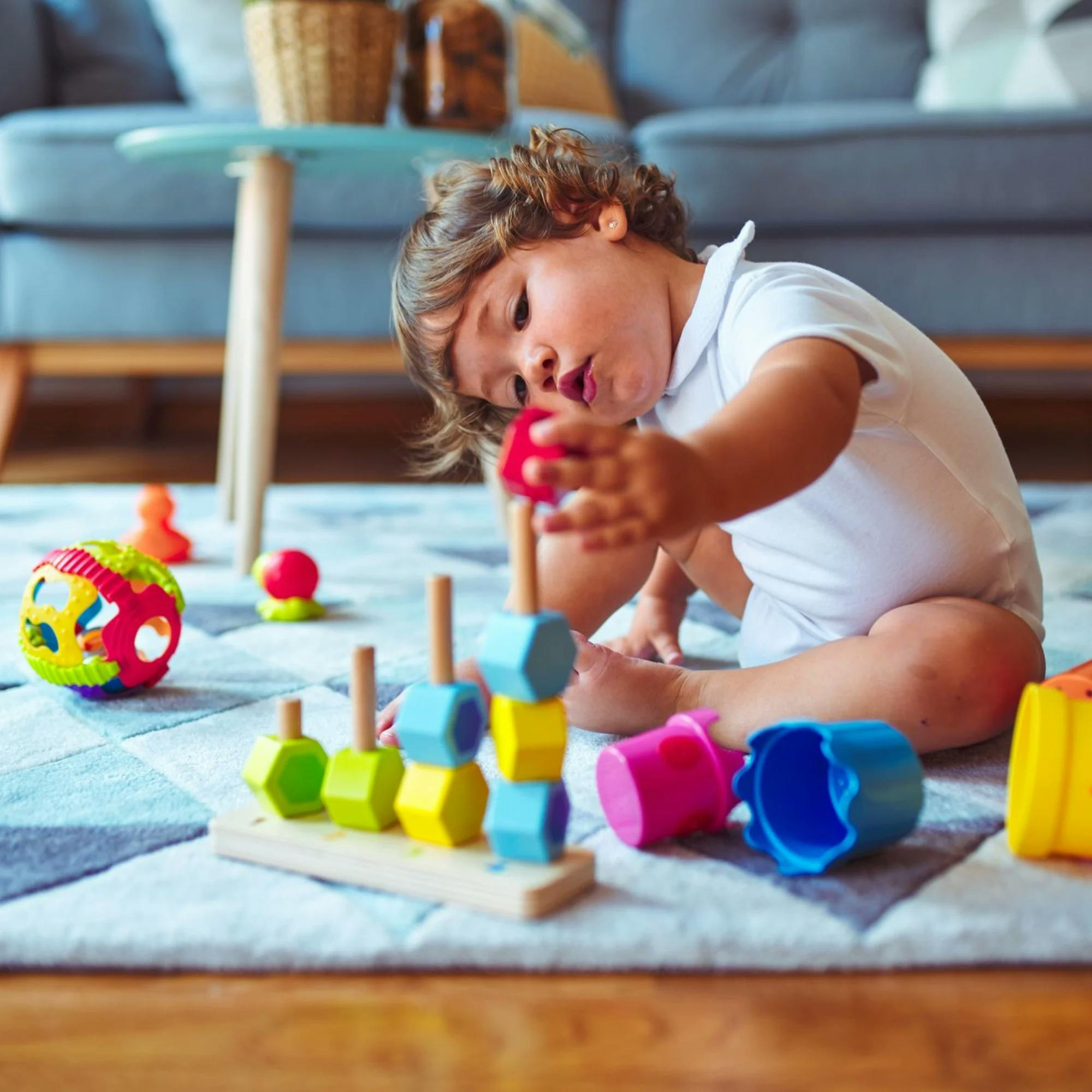
Not only do these interactions build communication and social skills, they also support receptive language skills. Receptive language refers to the language we understand. Before children can use new words on their own, they first have to understand the meaning of the words. Simple play activities are a great way to target these receptive language skills! The more familiar your child becomes with different words, the more likely they will be to use them on their own.
Play is important for all children, whether they are neurotypical or neurodivergent. Parents and caregivers should find ways to engage and play with their child every day. Not only is it fun, you’ll also be supporting your child’s communication growth.
For more articles on play skills, social pragmatics, and how to support your child’s development, be sure to browse our Learning Center.


 Abby Barnes, M.S., CCC-SLP
Abby Barnes, M.S., CCC-SLP